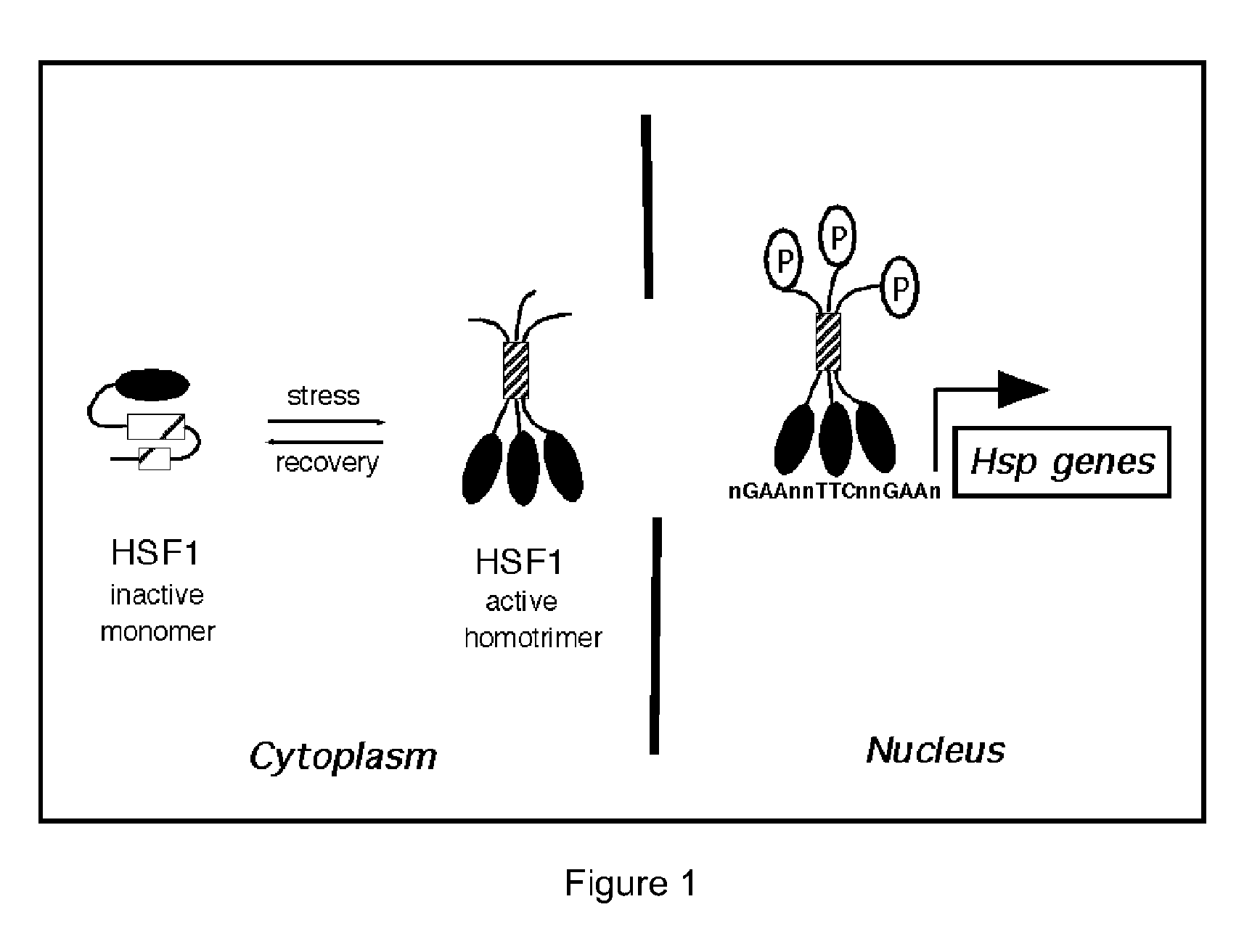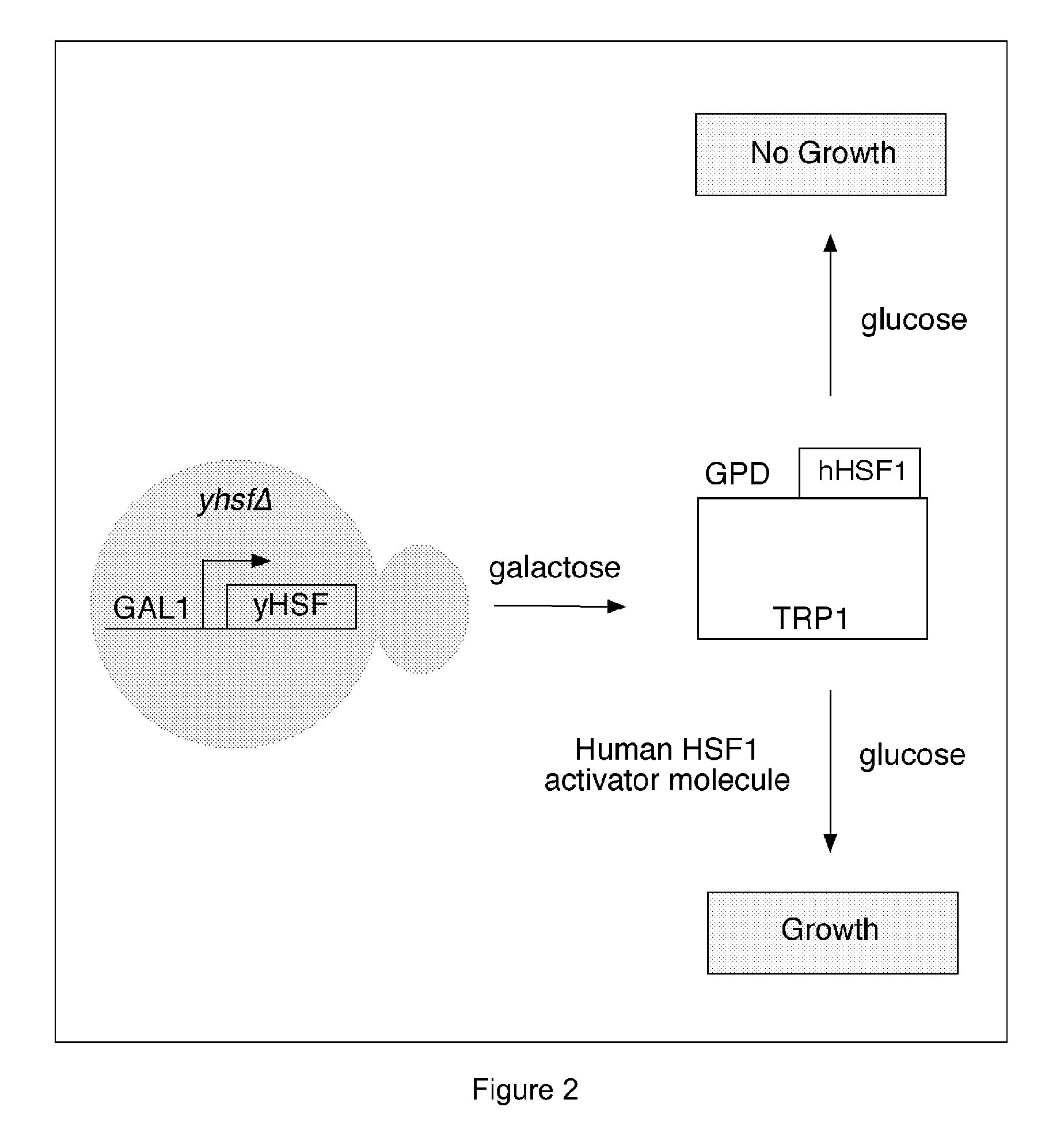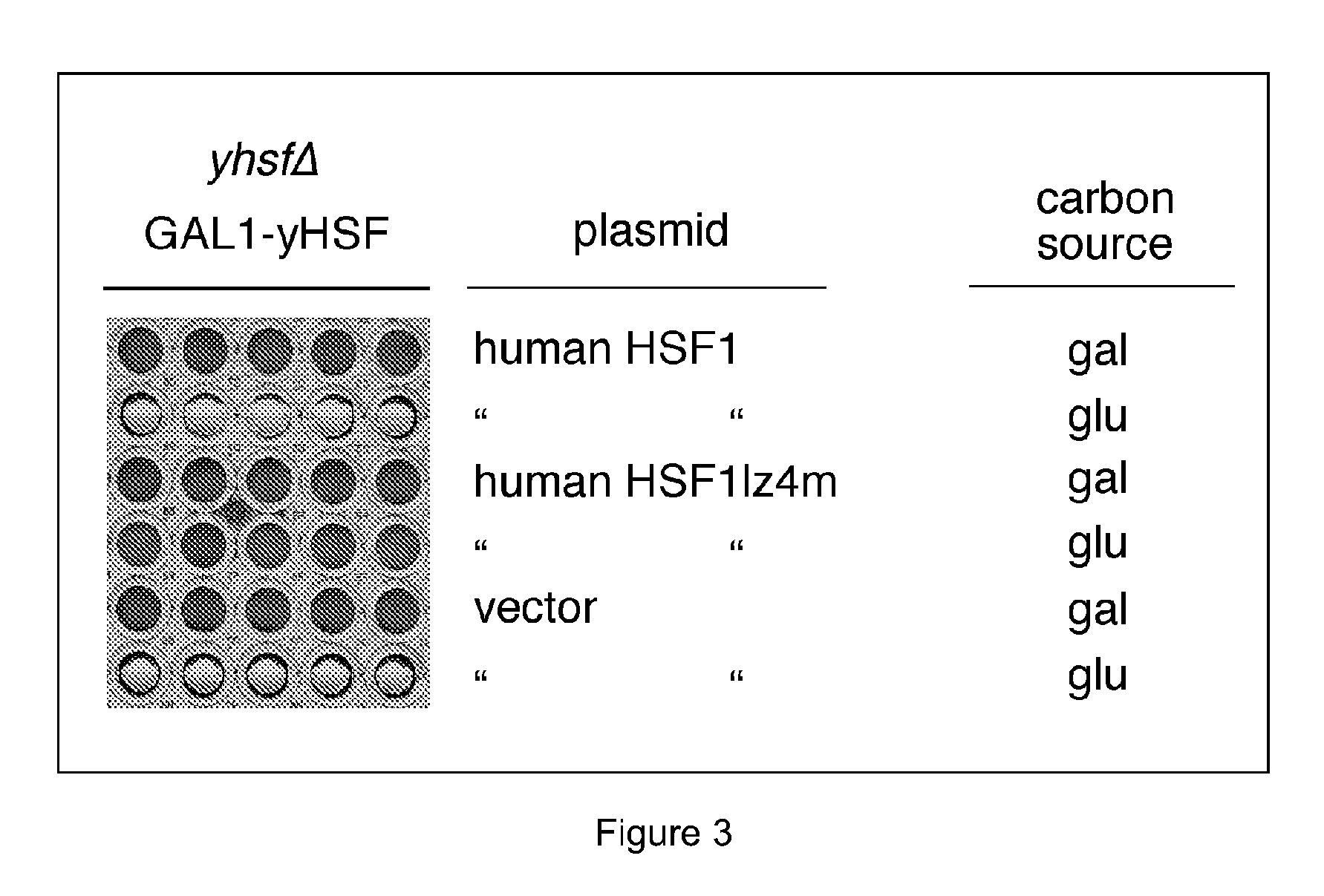Substituted 1,3-thiazoles as heat shock transcription factor 1 activators
a technology of transcription factor and 1,3-thiazole, which is applied in the field of heat shock transcription factor and hsf activating compounds, can solve the problems of protein folding and affect its function, and achieve the effect of improving intracellular quality control
- Summary
- Abstract
- Description
- Claims
- Application Information
AI Technical Summary
Benefits of technology
Problems solved by technology
Method used
Image
Examples
example i
[0416]This example describes synthetic procedures for the compounds of the present invention. The compounds of the present invention (e.g., compounds capable of HSF activation) can be prepared by methods well known in the art from readily available starting materials using the following general methods and procedures. The skilled artisan will appreciate that where typical or preferred process conditions, such as, reaction temperatures, times, mole ratios of reactants, solvents, pressures, are given, other process conditions can also be used unless otherwise stated. Reaction conditions may vary with the reactants or solvent used, but such conditions can be determined by one skilled in the art by routine optimization procedures.
[0417]Furthermore, the compounds of the present invention (e.g., compounds capable of HSF activation) can contain one or more chiral centers. Accordingly, if desired, such compounds can be prepared or isolated as pure stereoisomers, i.e., as individual enantiom...
example ii
[0439]This example describes the synthesis of 4-Butyl-N-(3-phenyl-1-o-tolyl-1H-pyrazol-5-yl)benzamide.
[0440]
[0441]Benzoylacetonitrile (500 mg, 3.44 mmol) and o-tolylhydrazine hydrochloride (574 mg, 3.61 mmol) were placed in a microwave vial and dissolved in methanol (1.7 mL). The reaction vessel was sealed, placed in a microwave oven and heated at 120° C. for 1 hour. After this period, the reaction mixture was concentrated onto silica gel and purified by flash chromatography (0-50% ethyl acetate / hexanes gradient) to afford the desired intermediate, 5-phenyl-2-o-tolyl-2H-pyrazol-3-ylamine (392 mg). LC / MS: Calc. C16H15N3 249.13 amu; Obs. [M+H]+=250.2 amu.
[0442]5-Phenyl-2-o-tolyl-2H-pyrazol-3-ylamine, compound prepared above, (75 mg, 0.30 mmol) was dissolved in dichloromethane (1 mL) and DIEA (105 μL, 0.600 mmol) followed by the addition of 4-n-butylbenzoyl chloride (63 mg, 0.33 mmol). The reaction was heated at 50° C. overnight. After this period, the reaction mixture was concentrated...
example iii
[0443]This example describes the synthesis of 4-Ethyl-N-(1-phenyl-3-(thiophen-2-yl)-1H-pyrazol-5-yl)benzenesulfonamide.
[0444]
[0445]Phenyl hydrazine (143 mg, 1.32 mmol) and 3-oxo-3-(2-thienyl)propionitrile (200 mg, 1.32 mmol) were placed in a microwave vial and dissolved in methanol (660 μL). The vial was sealed, placed in a microwave oven and heated at 120° C. for 40 minutes. After this period, the reaction mixture was concentrated to dryness in vacuo. The residue was redissolved in ethyl acetate and the organic solution washed with water, saturated aqueous NaHCO3 and brine, respectively. The organic layer was dried over anhydrous Na2SO4 and concentrated. The crude material was purified by flash chromatography (20-50% ethyl acetate / hexanes gradient) to afford the desired intermediate, 2-phenyl-5-thiophen-2-yl-2H-pyrazol-3-ylamine (315 mg).
[0446]Next, the 2-phenyl-5-thiophen-2-yl-2H-pyrazol-3-ylamine, compound obtained above, (315 mg, 1.30 mmol) was dissolved in pyridine (3 mL) and 4...
PUM
 Login to View More
Login to View More Abstract
Description
Claims
Application Information
 Login to View More
Login to View More - R&D
- Intellectual Property
- Life Sciences
- Materials
- Tech Scout
- Unparalleled Data Quality
- Higher Quality Content
- 60% Fewer Hallucinations
Browse by: Latest US Patents, China's latest patents, Technical Efficacy Thesaurus, Application Domain, Technology Topic, Popular Technical Reports.
© 2025 PatSnap. All rights reserved.Legal|Privacy policy|Modern Slavery Act Transparency Statement|Sitemap|About US| Contact US: help@patsnap.com



